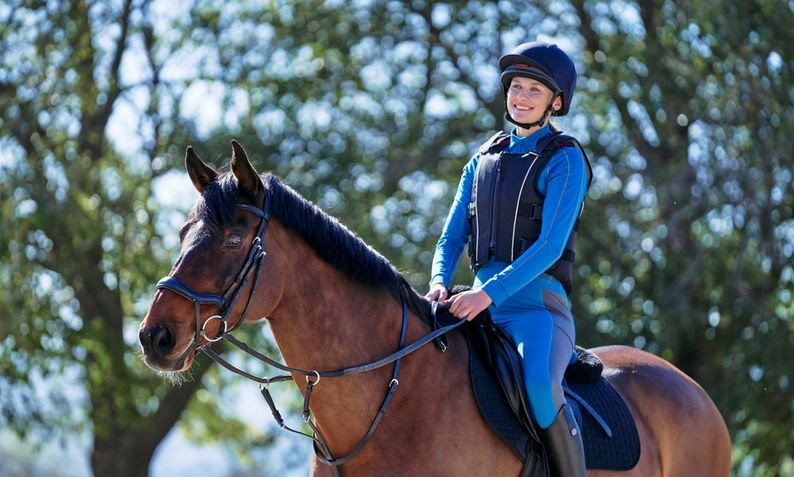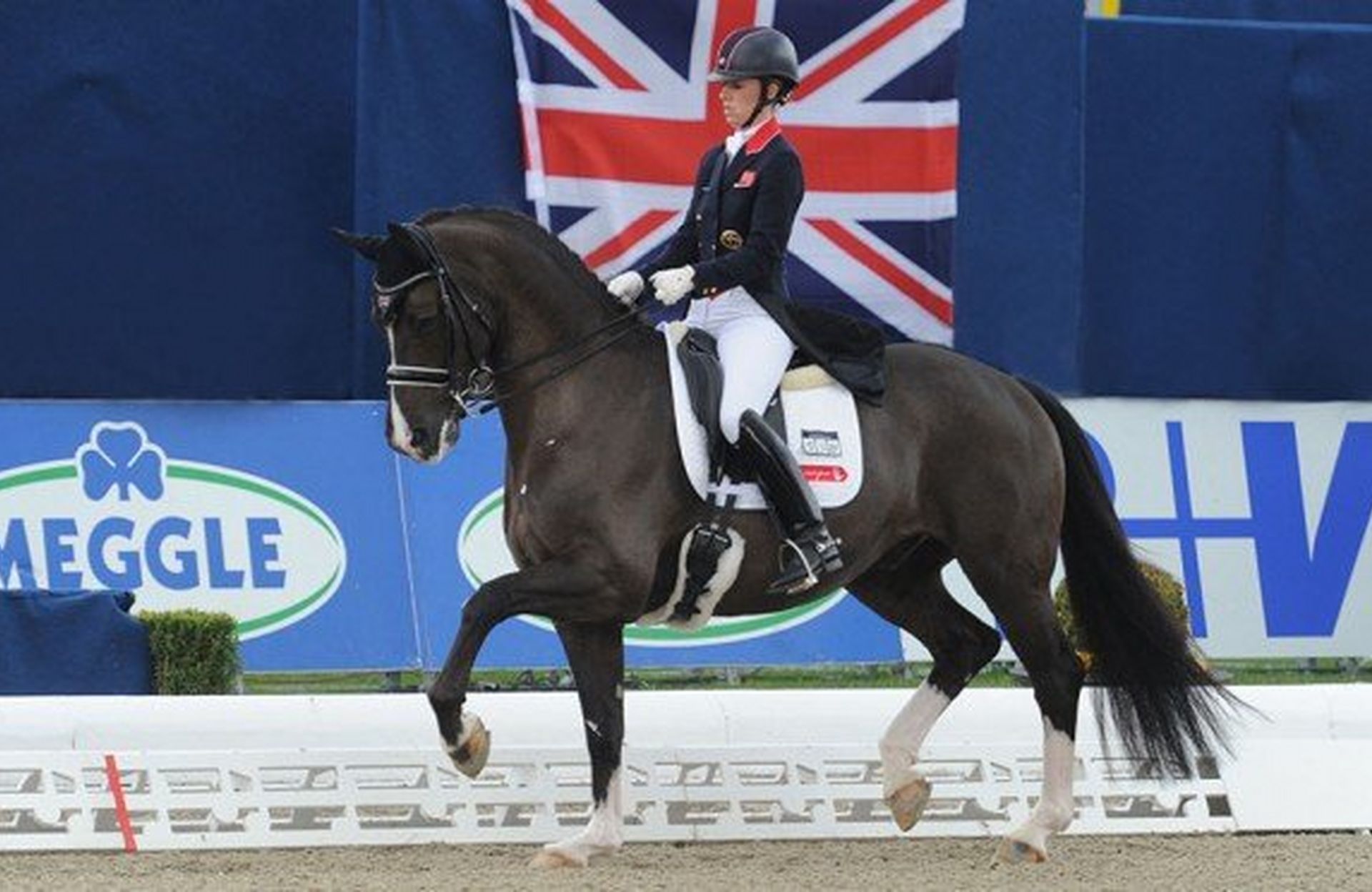
Here are The New British Showjumping Whips & Spurs Ruling effective from the 1st January 2020.

What are Spurs and why do people use them?
Spurs are a metal tool that is attached to the heel of riding boots for the purpose of making a horse move forward. They are usually used to back up the rider’s natural aids (seat, hands, leg and voice) on horses that need more impulsion. They allow the rider to give subtle signals to the horse that can be almost invisible to the watching eye. In Dressage, spurs are not used to make the horse go faster but give precise aids throughout the movements. Spurs are used in some showing classes for etiquette.
Parts of a spur
The ‘Yoke’ – this wraps around the heel of the boot.
The ‘Shank’ – this extends from the back of the yoke and is the part that touches the horse.
The ‘Rowel’ – sometimes attached to the shank depending on the design. A revolving wheel or disc.
Spurs are usually held on with a band of leather called a spur strap. Some styles have no strap and simply stay on due to the yoke being very tight.
How should they be worn?
Spurs are worn with the end of the shank pointing slightly downwards. They should sit on the spur rest on the back of the boot and the buckle of the spur strap should sit on the outside of the boot.
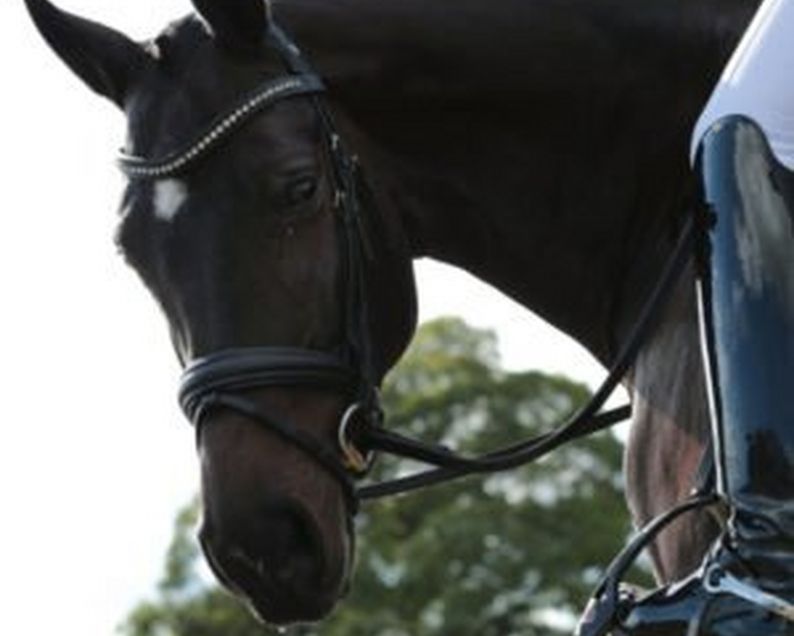
How do you use a spur?
It is important that the rider has the correct riding position before attempting to ride in spurs. An unstable leg will jab the shank into the horse’s side and could cause an irritated, distracted or annoyed horse. Improper use can be dangerous. They’re are activated when the rider lifts their heel slightly, pushing the end of the shank or the Rowel against the horse’s side.
Types
Spurs are available for Men, Women and Children and the size is different to allow optimum fit to the boot. Spurs are then divided into categories depending on the size of the shank – 0.6cm | ¼” is relatively small and common for a child’s spur where as 5-7.5cm | 2-3” is a long shank. Alongside the differences in the size of the spurs, the shape can also be different. The different types of spurs are detailed below:
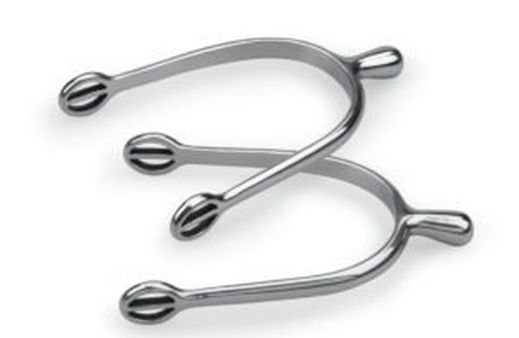
Round End Spurs
A milder option which has a small ball at the end of the shank.
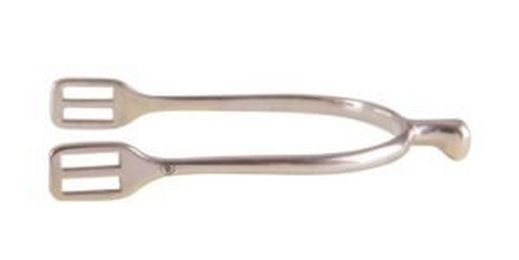
Knob End Spurs
The end of the shank is squared off but has blunt edges.
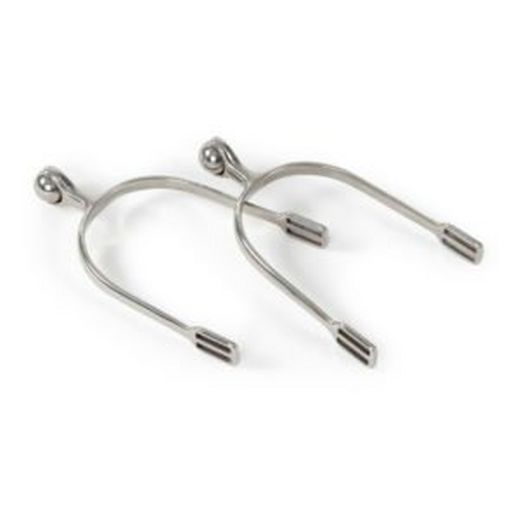
Roller Spurs
• Disc – The end has a small rolling disc that has no teeth – Popular in Dressage.
• Ball – A very mild spur ideal for use on sensitive horses – the end of the shank has a plastic roller attached which moves along the horse’s side.
• Teeth – The end of the shank has a blunt toothed wheel attached that spins. The more teeth on the wheel the milder it is – most have 8 teeth on each wheel.
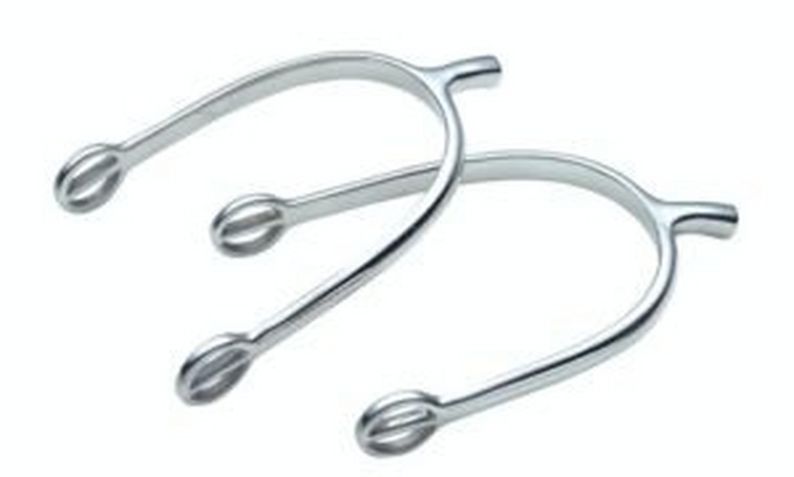
Prince of Wales Spurs
A common spur which has a flat end making it slightly sharper.
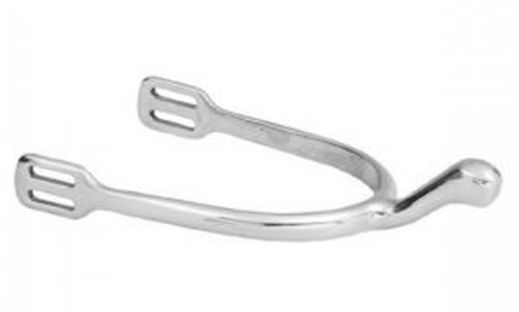
Swan Neck Spurs
Common in Dressage – The shank of the spur goes upwards at an angle before levelling off.
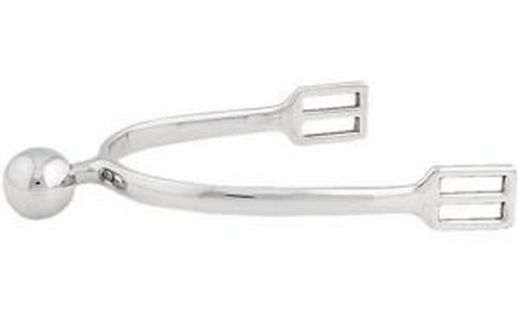
Waterford Spurs
The end of the shank has a large round ball

Le Spur
A spur with small teeth inside the heel band – Offers a subtle aid – the rider does not have to turn they’re heel
Half Mounted Spurs
The spur is decorated on one side
Full Mounted Spurs
The spur is decorated on both sides
Choosing the right riding spurs based on discipline
Dressage
Many dressage styles tend to have a short shank length due to the close contact leg position. Dressage riders tend to prefer a Waterford style spur with a round ball at the end, the Disc spur with no teeth or the Swan Neck spur due to its design.
In British Dressage, spurs can be worn at all levels and are mandatory from Advanced level upwards. Dummy spurs are permitted. There is no restriction on the type of shank or Rowel as long as they are free to move. Only blunt styles without rowels can be worn in Young Horse Classes.
Show Hunter/ Jumpers
Many use a flatter style to encourage impulsion, such as the Prince of Wales spur.
In BSJA shank in excess of 3cm long, with a rowel diameter in excess of 1cm or spurs with roughened edges are not permitted. In pony competitions only blunt or roller ball styles may be worn. Sharp or Rowel end options are not permitted. The overall length must not exceed 2.5cms in length measured from the back of the rider’s boot.
Western
For western is is common to have rowels that rotate and are decorated. The shank of a western style is usually longer and wider in diameter due to the rider’s long leg position. A western saddle and stirrups tend to sit the riders leg further away from the horse’s side hence the longer shank.
You can shop our full range of products at www.naylors.com or why not visit one of our stores. Found this blog helpful? We’d love to hear your thoughts.

